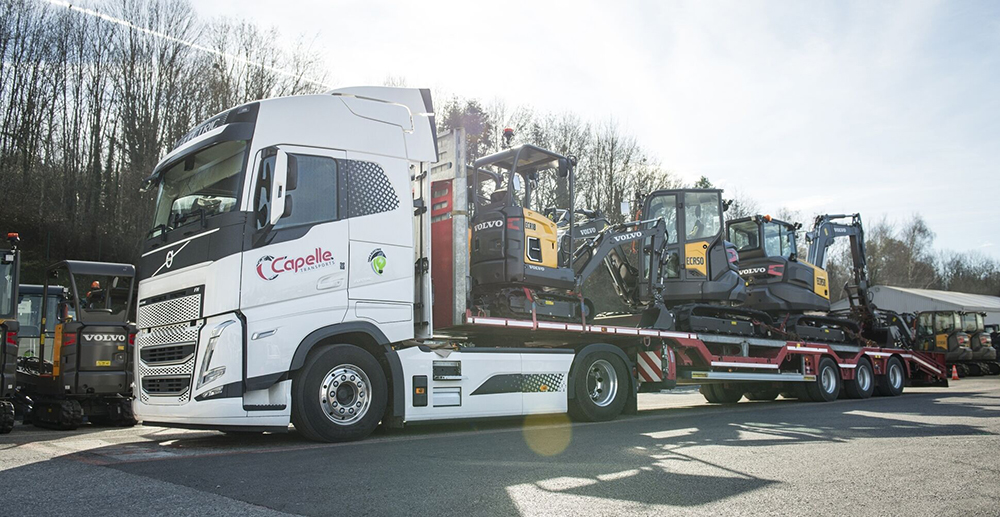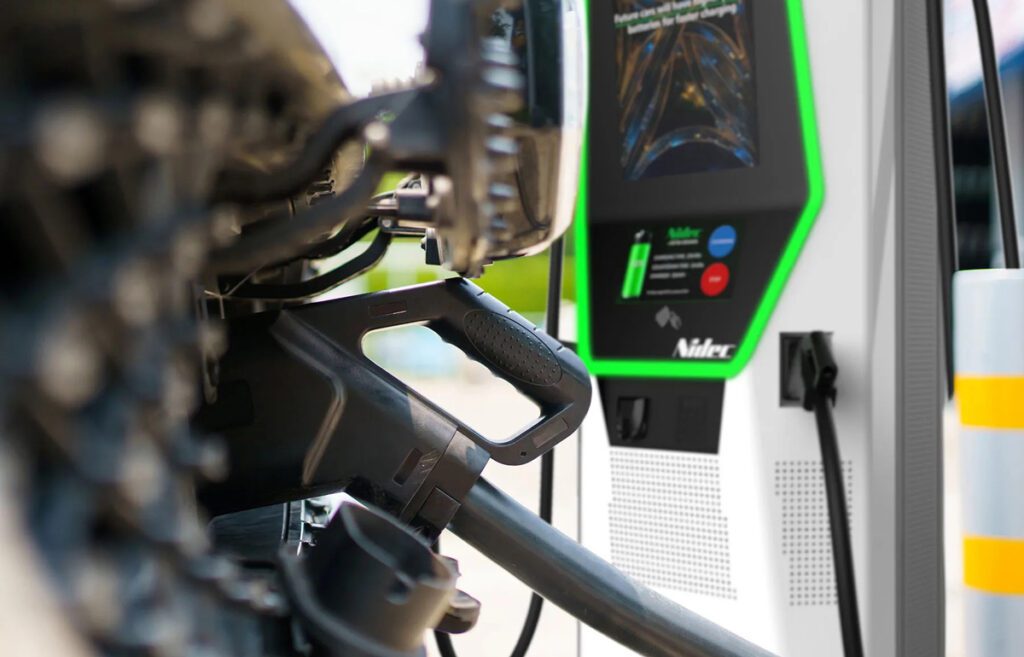California’s recent adoption of the ACF regulation, which will phase out diesel trucks over the next few years, has highlighted the pressing need for heavy-duty EV charging infrastructure.
WattEV is doing its part. Construction of its 26-truck charging plaza at the Port of Long Beach is complete, and the company, along with charging standards organization CharIN and other partners, celebrated with an event called the VOLTS conference, at which the facilities were tested with a variety of heavy-duty EVs. The new charging hub opens for public use in mid-May.
WattEV’s POLB e-truck charging plaza currently features 26 charging bays using CCS charging stations to provide power at up to 360 kW. When trucks with megawatt charging capability become available, the company plans to open four more pass-through e-truck bays, featuring the Megawatt Charging System (MCS), which can deliver up to 1.2 megawatts.
The WattEV depot is adjacent to the Pier A terminal at the Port of Long Beach, and will serve heavy-duty electric trucks with routes connecting to inland destinations throughout Southern California.
The combined ports of Long Beach and Los Angeles receive some 40 percent of the nation’s containerized imports. They are served by over 20,000 diesel-spewing trucks, 25 percent of which are more than 10 years old. Both ports have set a goal of going 100 percent zero-emission by 2035.
While WattEV’s charging hubs will be open to all EV operators, the company’s own fleet transportation platform is an integral part of its business model. The company will start with 14 Nikola electric trucks, and plans to deploy more than 100 electric trucks by the end of 2023.
Salim Youssefzadeh, CEO of WattEV, said the POLB charging depot is the first of several planned throughout California, including warehouse districts in nearby Gardena and inland near San Bernardino. “This charging station is the southern anchor of our planned electric-truck charging freight corridor, which will incrementally connect to all the major freight routes throughout California, Oregon, Arizona and Nevada.”
Source: WattEV








































































